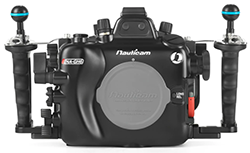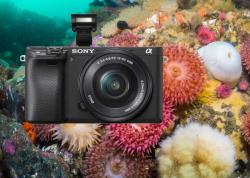Panasonic GH6 Review

The Panasonic GH6 is Panasonic's newest top micro four thirds camera. It replaces the famous Panasonic GH5 which has been a staple video camera for underwater videographers for years. The camera features specifications that are truly incredible for a micro four thirds camera including 4K video recording up to 120 frames per second and 5.7k recording up to 60 frames per second.
However, the release of the Panasonic GH6 comes at an interesting time for the video market. Many similarly priced full frame cameras offer far better video picture quality than the GH6 - like the Sony A7S III, Sony A7 IV, Canon EOS R6, and Nikon Z6II. None of these cameras offer the same frame rates and resolutions that the GH6 does. So underwater video shooters searching for a camera in the $2,000 - $2500 price point are going to need to make a decision between frame rates/resolution and picture quality.
We put the GH6 to the test over the course of a month of diving with from Washington State to Southern California. The footage from this micro four thirds camera was certainly within professional standards - another testament to the fact that these days, it really doesn't matter what camera you are shooting with. Lighting and lenses are more important to the final shot. That being said, we did come back from our dives with mixed feelings about the camera and here's why....
Panasonic GH6 US MSRP: $2197.99
Support our content and get your Panasonic GH6 underwater housing at Bluewater Photo! Feel free to email us at sales@bluewaterphotostore.com to get set up with what you need.
Ikelite Panasonic GH6 Underwater Housing
Nauticam Panasonic GH6 Underwater Housing
Aquatica Panasonic GH6 Underwater Housing
Isotta Panasonic GH6 Underwater Housing
Panasonic GH6 Underwater Housing Guide
Panasonic GH6 Underwater Settings
Panasonic GH6 Underwater Housings
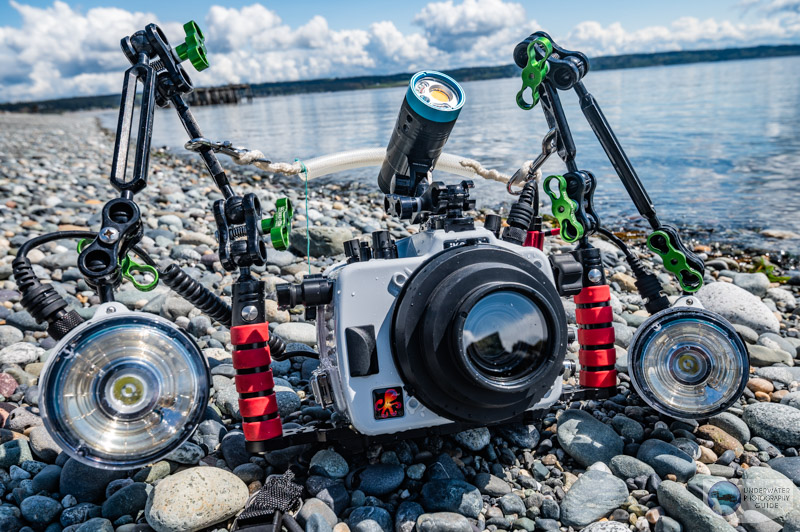
There are currently three models of underwater housings for the Panasonic GH6 available at Bluewater Photo. We do expect more housings from other manufacturers to be released soon. You can keep up with future GH6 housings by following the Bluewater Photo Panasonic GH6 Underwater Housing Buyer's Guide.
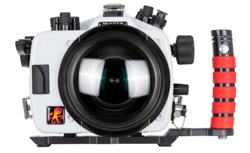
Ikelite Panasonic GH6 Underwater Housing
*Affordable with a Unique Rear Seal, Made in the USA*
The Ikelite Housing for the Panasonic GH6 is a lightweight but sturdy polycarbonate housing. It features a clear back plate that makes it easy to see the LCD so you can monitor the camera at all times. The housing has full control over all essential camera controls and includes a dedicated recording lever. The housing is equipped with a Dry Lock port system and is depth rated to 200ft. We took this housing on dozens of dives and have been very pleased with the results.
Nauticam Panasonic GH6 Underwater Housing
*Well Designed, Sleek & Loaded with Accessories, Built to Last*
The Nauticam Panasonic GH6 Housing provides a professional level experience for underwater video shooters. With emphasis on ergonomics and control, all essential camera functions are operable from the housing, and it is comfortable to hold and use underwater. Nauticam provides options for a variety of accessories, including dedicated ports for external monitors, and sturdy tripod attachments.
Aquatica Panasonic GH6 Underwater Housing
*Affordable, Rugged, Compact*
The Aquatica Panasonic GH6 Underwater Housing is a very rugged anodized aluminum housing. The controls are intelligently designed so that all controls are within a fingers distance from the handle. The housing is equipped with a surveyor monitor system (leak detection). There are two ports available that can be used with an HDMI monitor, vacuum system, or a remote control. The housing is rated to 90m/300 ft.
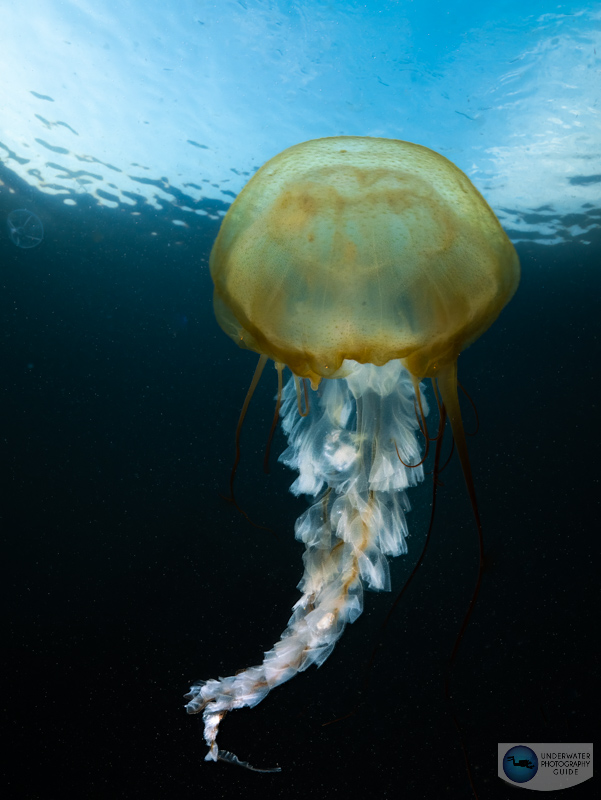
Panasonic GH6 Specifications
- 25.2 megapixel micro four thirds sensor
- 5.7k video recording up to 60p
- 4K video recording up to 120p
- V-Log/V-Gamut/ProRes 422 HQ
- 1 x CFexpress & 1 x UHS-II SD slot
- Type A HDMI port
- 14 fps in stills mode
- UHD or DCI 4K in 10-bit 4:2:2 at up to 60fps
- 5-Axis in-body image-stabilization with up to 7.5 stops of exposure recovery
- Weight: 3.14 lbs
- Dimensions: 5.45" X 3.95" X 3.92"
Improvements Over the Panasonic GH5
Dynamic range
One of the issues with the GH5 was its limited dynamic range due to its smaller sensor size. The Panasonic GH6 attempts to rectify this with a dynamic range boost, although early tests suggest it only improves dynamic range slightly in some shooting situations. According to Panasonic, you get an extra 13 stops of dynamic range in boost mode, but the trade-off is an increased base ISO of 2000. There's only so much you can do, before you're limited by the size of the sensor however.
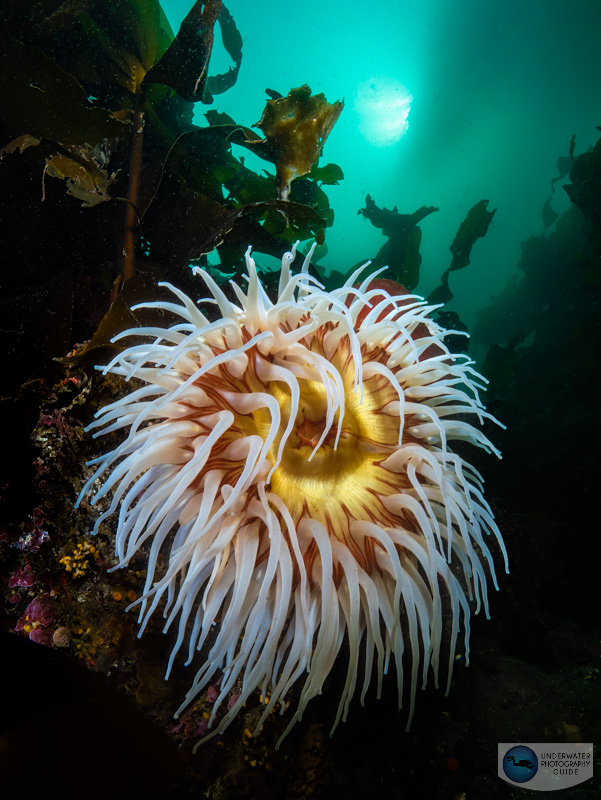
Improved cooling
In all fairness, overheating was never a massive issue with the GH5, but the new Panasonic GH6 comes with a pretty decent sized fan for additional cooling anyway. Despite the large outlet for hot air, the GH6 is still weather sealed. Any water that gets into the fan inlet or outlet won't find its way into the camera, so you can still use it outside in rough conditions.
Tilt screen
The tilt screen still flips out and rotates like the old GH5, but now it also tilts up at a roughly 45-degree angle without having to flip it out so that shooting at chest height or down low is easier than ever. Being able to flip the screen up and out also means that you still have full unrestricted access to all ports, input and outputs, which is excellent and something that all videographers can appreciate.
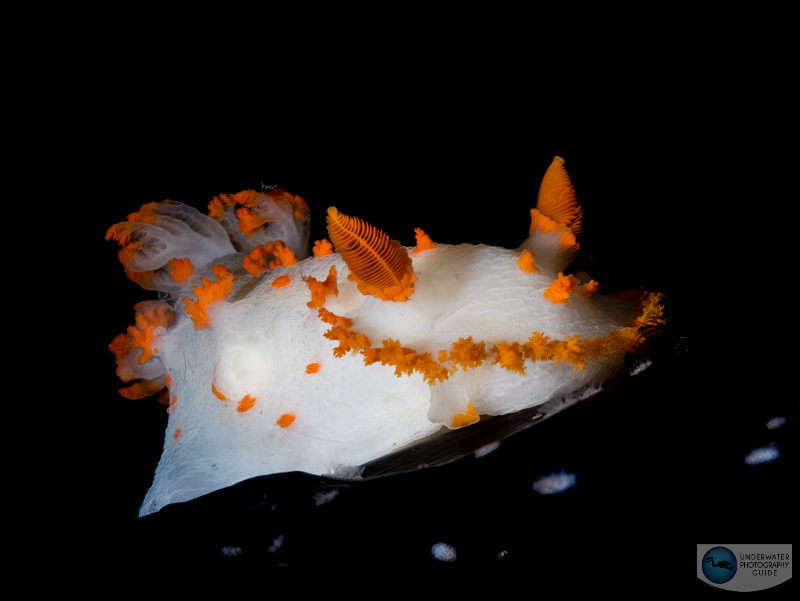
Panasonic GH6 Key Features
Build Quality & Ergonomics
The Panasonic GH6 is slightly larger (i.e., deeper) and heavier than the GH5, with a noticeably bigger grip and the addition of the cooling fan we've already mentioned. The new cooling fan does add depth to the camera which makes most housings similar in size to full frame housings. Despite being bigger and heavier, the GH6 feels nicer to use above water, thanks to the improved grip size. It also gave Panasonic the chance to include a few more customizable buttons and controls on the body, which is a big win for people who like the flexibility to use cameras in different ways. There are new buttons on the front, back and top. Overall, we think this camera has an excellent workflow for topside video.
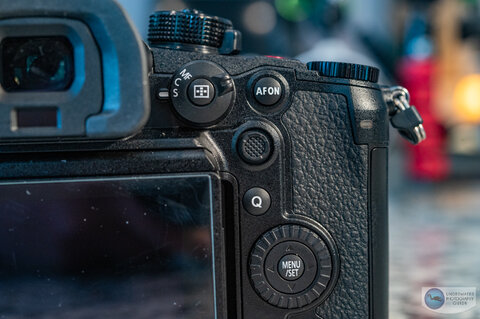
However, when you put the GH6 in an underwater housing, the extra switches and dials can also give it a bit of a learning curve when shooting underwater. There were some features that we really liked underwater including the fact that you can start recording with the shutter button or the record button.
Battery life
Battery life is the Achilles heel of this camera - it's even shorter than the battery life on the GH6. Whether we were shooting video or photo, or both, the system only lasted 1.5 dives. This means you should plan on having a new battery after every dive. While some might be fine carrying around 3-4 batteries for a dive day - if you're diving on a liveaboard, battery life could become a hindrance.
Panasonic has created an upgraded battery for the camera which gives you a recording time of about 1 hour 15 minutes on paper when shooting in 5.7K 60p, but it will also work with the old GH5 batteries if you have any laying around. The battery compartment itself is now entirely inside the larger grip, which means you can open the battery door even when a tripod plate is attached to the base, which you couldn't do on the old model.
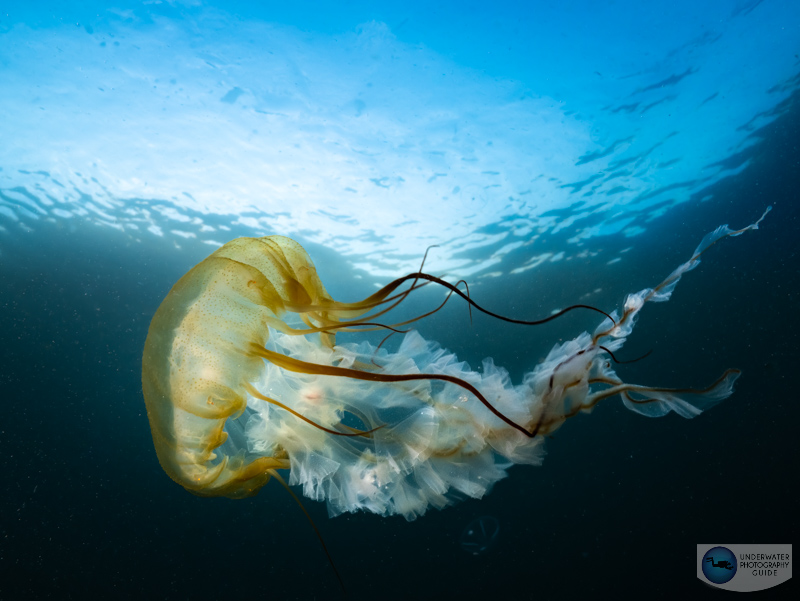
4K/120p & 5.7K/60p recording
Of course, the largest upgrade to the GH5 and GH5s is the GH6's 4K/120p and 5.7K/60p video recording. 5.7K allows underwater shooters to capture clips with closer crops and still export in 4K. Being able to shoot at 120 frames per second allows you to create ultra slow motion clips and stabilize your video.
We consistently used the 5.7K recording feature in order to get b-roll or closer crops on our subjects. It's important to note that 5.7K is not exactly a 16x9 aspect ratio. So if you are filming normal 4K video, you'll need to make some small crops and adjustments to the video in post processing.
When filming with the Olympus 60mm macro lens, it's essential to film in 4K/120p if you aren't using a tripod. The narrow field of view of the lens means that any small movements create shake in your video. When we slowed down our 4K/120 footage to 25% speed, the shake was virtually eliminated.
Picture Profiles
Thankfully, you don't need to pay to use the V-Log logarithmic picture profile on the GH6. The GH6 also allows you to shoot in ProRes 422 HQ. Both of these picture profiles allow you to bring out more detail and dynamic range in your video by capturing more details in your highlights and shadows. We used V-Log on many of the clips that we filmed and thought the color accuracy was very good after some adjustments in post.
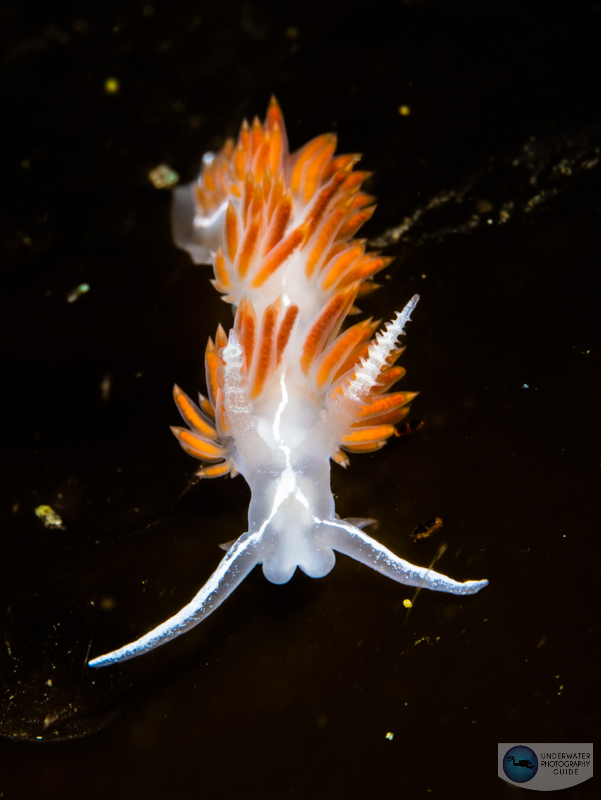
White Balance
Setting a manual white balance is very easy on the Panasonic GH6. Check out Bluewater's Panasonic GH6 underwater settings article for a full guide on how to set a manual white balance. We found it to be fairly accurate underwater, but reds did seem to be a tad oversaturated in our video. This trend was consistent when we used auto white balance with underwater video lights as well. In fact, auto white balance was difficult to use as the white balance shifted more than we've seen with other modern video cameras.
Output ports
The Panasonic GH6 has both HDMI and USB-C output ports. Future firmware updates will allow you to record directly into an external SSD storage device via the USB-C port, which would be a welcome upgrade. The USB-C port also allows you to connect an external power supply should you need it. Currently, the full HDMI port available on the camera is a great option for recording onto an external monitor or recorder.
Autofocus

The Panasonic GH6 still uses the same contrast detect autofocus system that Panasonic has stuck by with their micro four thirds format cameras. It's is much slower than other micro four thirds cameras made by OM System as well as contemporary full-frame cameras for the same price point.
Although the trend has been moving towards using autofocus for video, we recommend buying focus gears for your lenses if you plan on using the GH6 underwater. Manual focus will still be a good option for serious video shooters.
If you do plan on using autofocus in your video, as we did, then the Panasonic actually does a good job with subject detection on the LCD. However, the camera has a lot of trouble keeping up with moving subjects and often racks back and forth - making some clips unusable.
When it comes to underwater photography, we don't recommend this camera because of its poor autofocus. It would be much better to look at the OM system OM-1 or the OM-D EM-1 Mark III. Because water creates less contrast in a scene, the camera really struggles to focus underwater as opposed to topside. Subject tracking in photo mode does not work very well, so we stuck with shooting single point autofocus with our AF point in the center.
Panasonic GH6 for Underwater Video
There's no denying that the Panasonic GH6 is the world's best micro four thirds camera for underwater video. In fact, on a specs sheet, it outperforms many contemporary full frame cameras at the same price point. But at the end of the day, the sensor is still a micro four thirds sensor. You will not get quite the same low-light performance, dynamic range, detail, and bokeh as you would on a full-frame camera. And while we loved the quality of the video we captured - there is a noticeable aesthetic difference from full frame video.
Now the only reason we are being hard on the GH6 is because of the price point. Panasonic has decided to price the GH6 at the same level as many middle ground full-frame cameras. The reason they did this is that there are features that many full-frame competitors can't offer, like 4K/120p and 5.7K/60p video recording. And don't get me wrong - we used these features extensively. Some of our macro clips (e.g., our nudibranch clip) that look like they were shot on a tripod were, in fact, shot hand held. The only way we could do this was by filming at 4K/120p. Likewise, some clips we captured were not quite as cropped as we hoped (e.g, our sea nettle clip), so we cropped it and still exported our final video in 4K. Again, the only way we could do this was by filming at 5.7K.
So the ultimate decision comes down to - do you need incredible stabilization or more cropping power? If so, then the GH6 is the right camera for you. But if you need the best image quality or low light performance possible, you might want to consider a full frame camera for video.
Now all of these considerations go out the window if you already have micro four thirds lenses. If you are a Panasonic GH5 shooter and are invested in the system - the Panasonic GH6 is a worthwhile upgrade. The additional stabilization and cropping ability is well worth it to any underwater video shooter.
Panasonic GH6 for Underwater Photography
Photography is an afterthought on the GH6. Yes, the camera takes incredible underwater photos. But there are plenty of cameras for lesser price points that are more functional underwater photo cameras. So if you're an underwater photographer looking for a micro four thirds camera, consider the Olympus OM-D EM-5 Mark III, the Olympus OM-D EM-1 Mark III, or the OM System OM-1. The limited battery life and poor autofocus on the GH6 make it a bad choice as a photo camera.
Now that being said, it's still easy to work around an old school autofocus system. All you have to do is set the camera to autofocus single, put your autofocus point in the middle of the frame, lock onto your subject, and pan to recompose. So if you want to use the GH6 to capture thumbnails for your underwater videos or if you are a serious video shooter that still wants to shoot some photos, the GH6 will do you wonders. Our sample underwater photos speak for themselves. It's not about the camera you use - it's the lighting.
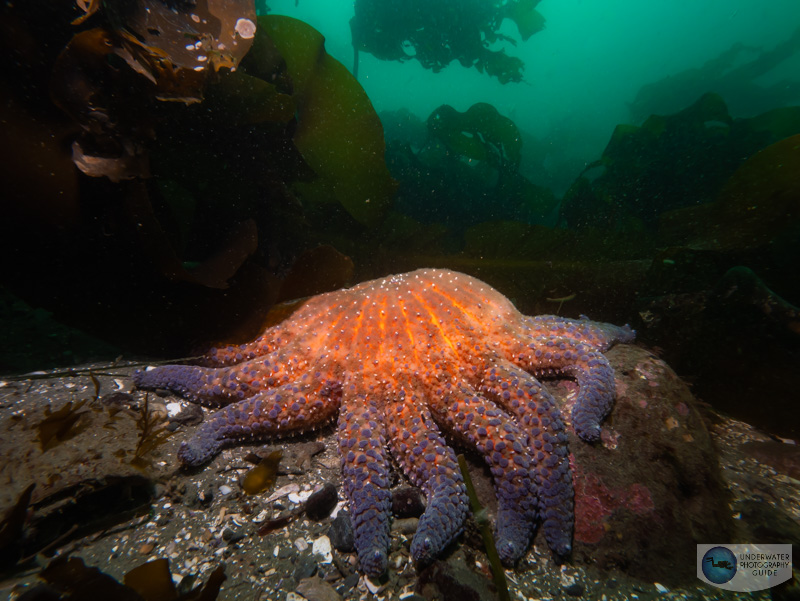
Underwater Lenses for the Panasonic GH6
The Panasonic GH6 features a standard Micro 4/3 lens mount, allowing it to use all Olympus and Panasonic 4/3 lenses. Below are our recommendations for fisheye, wide-angle and macro lenses.

Fisheye Lenses
There are two choices for fisheye lenses, ideal for capturing reefscapes, big animals, wrecks, close-focus wide-angle and other large underwater scenes. These lenses tend not to be preferred as much by video shooters due to the added barrel distortion. The new Olympus 8mm Pro fisheye offers the best image quality and lightning fast speed of f/1.8. The Panasonic 8mm fisheye lens has long been our go-to lens, delivering great photos with a full 180 degrees of coverage and widest aperture of f/3.5. Both lenses have a very close focusing distance, you can practically focus on the dome port!
Rectilinear Wide-Angle & Mid Range Lenses
The GH6 has many different wide-angle and mid-range zoom lenses to suit every underwater photographer. For wide-angle shooting, helping capture subjects like whales, sharks and sea lions, the newer Olympus 7-14mm Pro lens and the classic Panasonic 7-14mm are your choices. Wide-angle shooters will love the Olympus or Panasonic 7-14mm; choose Olympus for the best possible optic quality. We shot the Olympus 7-14mm f/2.8 Pro lens for our wide angle shots in the review. The Olympus 9-18mm lens is a great choice for those on a budget who still want a good wide-angle lens.
Kit lenses are an affordable way to get your camera in the water while also providing mid-range focal lengths ideal for shooting models in a pool. The Olympus 12-50mm is a great choice for ocean shooting, with a nice zoom range as well as built-in macro mode for capturing those small subjects.
The Panasonic 12-35mm F/2.8 lens is popular for underwater videographers, as it is a great focal length for underwater video, and the bright F/2.8 aperture is important for video. The Olympus 12-40mm Pro captures high quality images with an F/2.8 aperture and professional level glass and is another great option for underwater videography.
- Olympus 7-14mm Pro lens
- Panasonic 7-14mm
- Olympus 9-18mm lens
- Olympus 12-50mm
- Panasonic 12-35mm F/2.8
- Olympus 12-40mm Pro
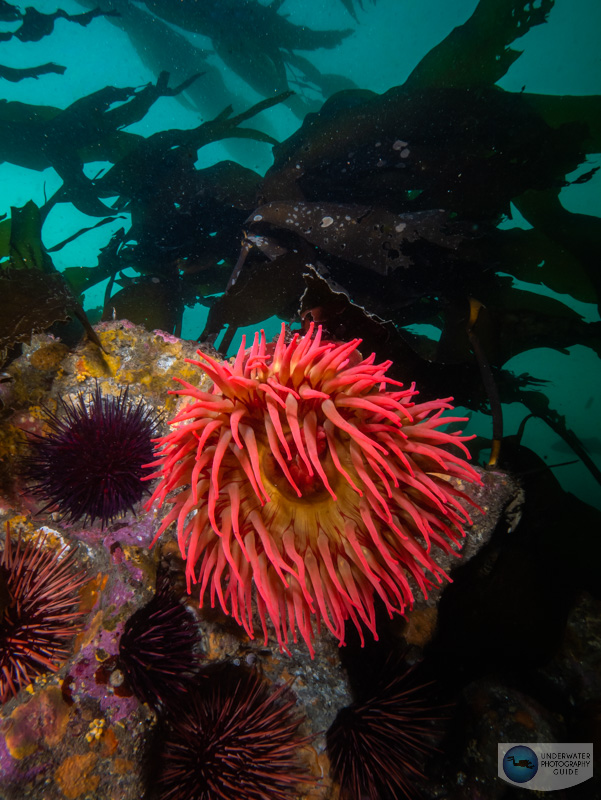
Macro Lens
The best option for shooting macro with the Panasonic GH6, is the Olympus 60mm macro lens. This lens delivers sharp 1:1 macro images and can be used with wet diopters outside your port in order to magnify your smallest subjects into great supermacro images. That being said, it can be tricky to use and even more tricky to shoot video with due to the long focal length. If that lens is too much, or you like shooting slightly larger macro, we recommend the Panasonic 45mm macro. This lens is a bit more money than the 60mm, but offers more flexibility in larger subjects. However, it is not ideal for super macro shooting.
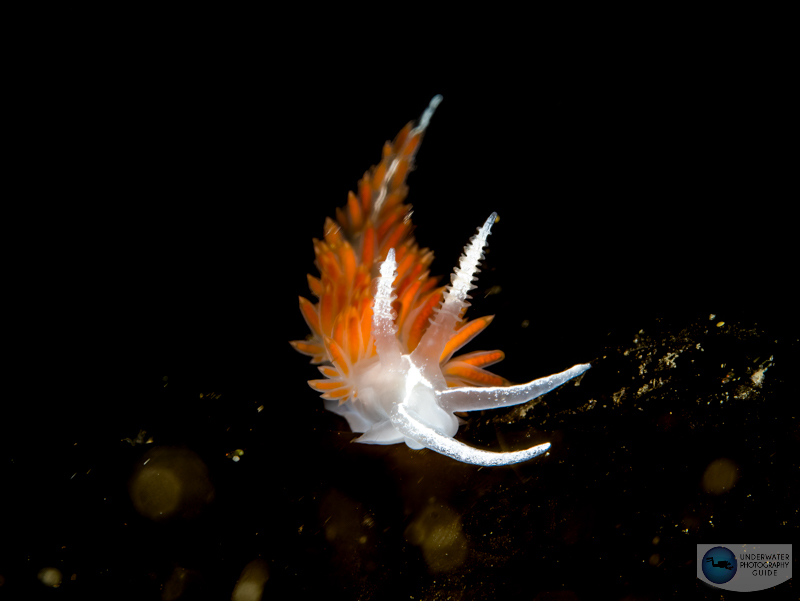
Final Thoughts
The Panasonic GH6 is an excellent cinema camera and the best micro four thirds camera for video shooting currently on the market. It's a worthy successor to the GH5 that carries over many of the features we loved about the previous version but adds to them with a wide range of new functionality, making this a true workhorse of a camera.
Yes, we have our concerns about autofocus and battery life. But while the GH6 may not focus quite as readily as a full frame camera, it does have the advantage of incredible stabilization and crops. At the end of the day, you can always work around a camera's limitations to get the shot you need. It's all about learning the machine you have in your hands.
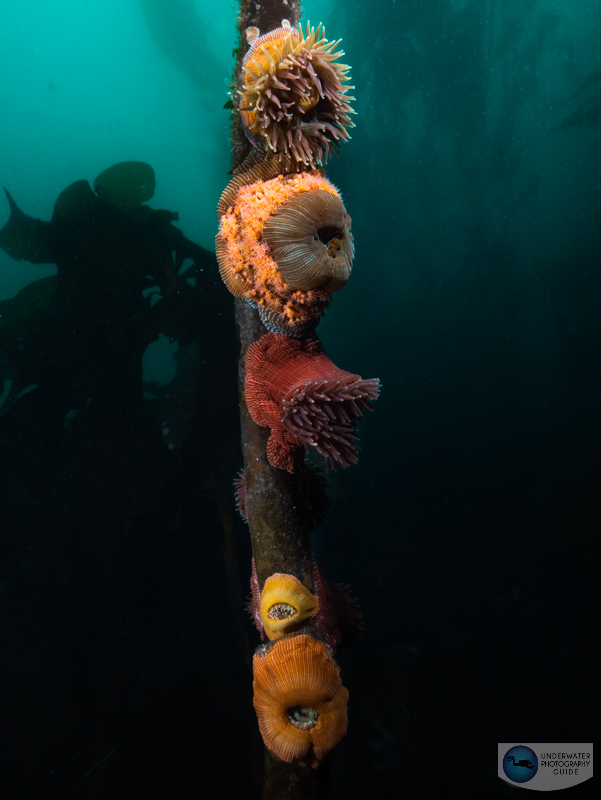
RECOMMENDED ARTICLES
SUPPORT THE UNDERWATER PHOTOGRAPHY GUIDE:
The Best Service & Prices on u/w Photo Gear
 Visit Bluewater Photo & Video for all your underwater photography and video gear. Click, or call the team at (310) 633-5052 for expert advice!
Visit Bluewater Photo & Video for all your underwater photography and video gear. Click, or call the team at (310) 633-5052 for expert advice!
The Best Pricing, Service & Expert Advice to Book your Dive Trips
 Bluewater Travel is your full-service scuba travel agency. Let our expert advisers plan and book your next dive vacation. Run by divers, for divers.
Bluewater Travel is your full-service scuba travel agency. Let our expert advisers plan and book your next dive vacation. Run by divers, for divers.




